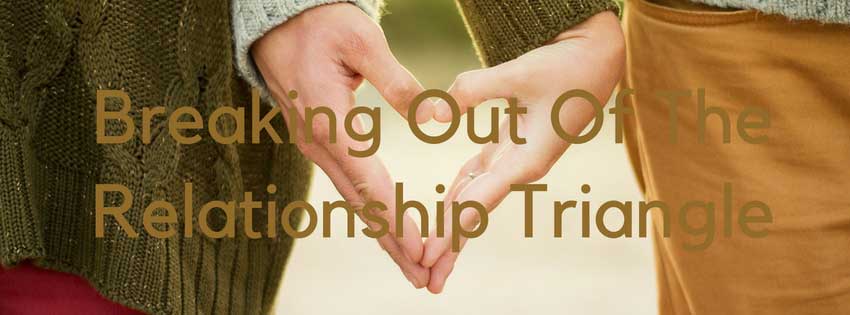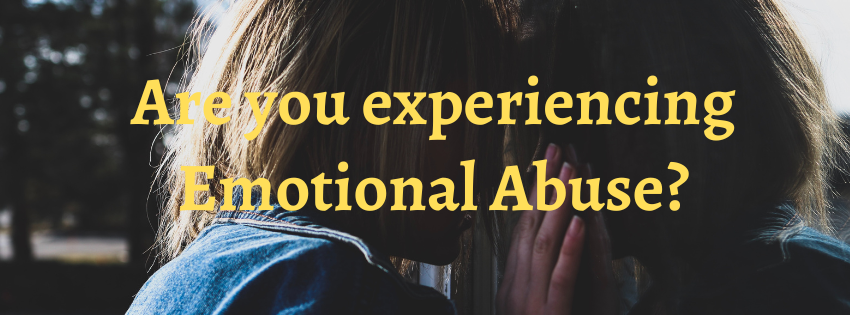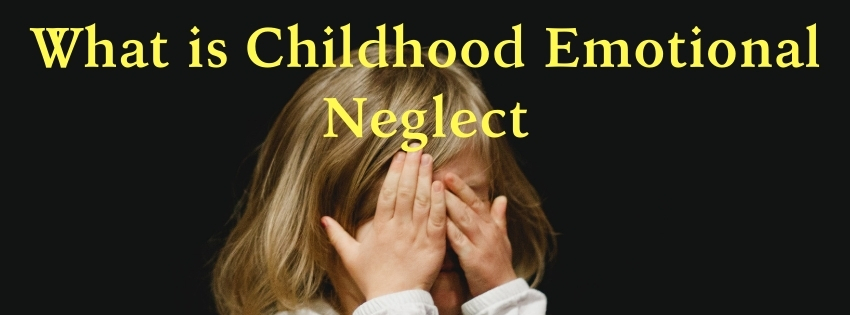Emotional abuse can have a profound impact on women and leave deep scars that last…

Breaking Out of the Relationship Triangle
Very often clients come in to deal with relationship difficulties. Even though we obviously cannot do relationship counselling when there is only one individual in the room, there are many things we can discuss about the nature of relationships, communication patterns and power dynamics. It can be very helpful to understand some common patterns of relating to partners that are strongly determined by our personality, upbringing, personal attachment style, and learned coping strategies.
One particular type of pattern that often develops in relationships is based on Karpman’s Drama Triangle. The triangle represents the relationship between two people. The Persecutor, Rescuer, and Victim represent different roles that people can play—not the people themselves! The roles interlock and there is always someone on top who seems to have more power and someone on the bottom. While each partner gets to move among all the roles, often one person will fit more comfortably in one role than in another. The reason the triangle is so strong and works so well is because the roles are complementary.
The rescuer is the person that has the better ability to function and hence they have more control and capability. Oftentimes the person in the victim role feels overwhelmed or like they can’t deal with everything that comes their way. That is when the Rescuer steps in and says, “I can help you out. Just do what I say, everything will be fine.” Oftentimes couples will begin their relationship in some form of this dynamic. It’s almost like they make a silent pact: The rescuer says, “I will agree to be strong and nice”; the victim says, “I will agree to be overwhelmed and unable to manage.” Everyone is happy. The rescuer feels needed, important, and in charge. The victim has someone they can lean on.
Changing Between Roles
And it works fine, except every once in a while one of two things happens.
- Sometimes the rescuer gets tired of doing everything. They feel as if they are shouldering all the responsibilities, and that the victim is not pulling their weight, not giving anything back, or not appreciating what the rescuer is doing. The rescuer gets fed up, angry, resentful and shifts over to the Persecutor role. They suddenly blow up, usually about something minor (who didn’t do the laundry or take out the trash), or act out— go out and spends a lot of money or go on a drinking binge, or has an affair. At that point the victim gets scared and moves up to the Rescuer position, trying to calm the waters. Then the persecutor feels bad about whatever they did or said, goes down to the victim position, and gets depressed. They both stabilise and go back to their original positions.
- At other times the victim gets tired of being on the bottom, always looking up and seeing the other one running the show, always telling them what to do. They get fed up and move to the persecutor role. Like the rescuer, the victim in this role blows up and gets angry, usually about something small. The message underneath that doesn’t get said is “Why don’t you get off my back! Leave me alone, stop controlling my life! I can do things myself!” The rescuer hears this and moves to the victim position. The persecutor then feels bad about whatever they did or said, they make up and go back to where they originally were.
The Issue of Responsibility
The rescuer and victim have a distorted sense of responsibility. The rescuer tends to be over-responsible: “Your problems are my problems, and when you get upset I actually get anxious. I try to ‘get’ you to feel better partly because I care, but partly to relieve my own anxiety.”
The victim tends to be under-responsible: “My problems are your problems—I expect you to fix them, and I either have to wait or manipulate you into doing so.” In the attempt to “make” the victim happy, the victim over time begins to feel pressure and control, which sets up the explosion.
Stepping Outside the Triangle
Outside all the drama of the triangle are the Adults. The adult role has:
- An ability to be emotionally calm
- An ability to observe oneself in a relationship pattern and make changes without expectations of the other
- An ability to view others as anxious or fearful rather than malicious or manipulative
- An ability to not react in kind to the anger or anxiety of others but to
- An ability to focus more on personal responsibility and behaviour than on the behaviour of the other
- An ability to make choices and be assertive even if this risks the approval or acceptance of the other
Two people can be snarled in the triangle for a long time— seemingly getting along, suddenly having some acting out or emotional explosion, making up, returning to their roles, and repeating the pattern over and over again. What can happen over time, is that one person is either tired of going around the cycle or begins to outgrow the role they are in. Like any other pattern it takes two to play the game, and as soon as one person begins to move toward the adult, the other gets scared and tries to pull them back in to keep it going.
The rescuer:
- Needs to learn to recognise their wants and take the risk of not being good and over-responsible.
- Needs to learn how to recognise anger and then use it for information about what they wants.
- Needs to experiment with letting go of control and resist the impulse to fix their own anxiety by taking over when the other is struggling.
- Needs to learn how to let down their guard, so they can learn to trust and be vulnerable and nurturing in a genuine way, rather than out of fear and the need for control.
The victim:
- Needs to build self-confidence—by taking risks and doing things on their own, by using the rescuer not as a rescuer but as a support.
- Needs to learn how to solve problems by separating them into manageable chunks so they doesn’t feel so overwhelmed.
- Needs to tap into their anger and use it to better define their boundaries and wants.
Reference: Doing Couples Therapy by R. Taibbi



